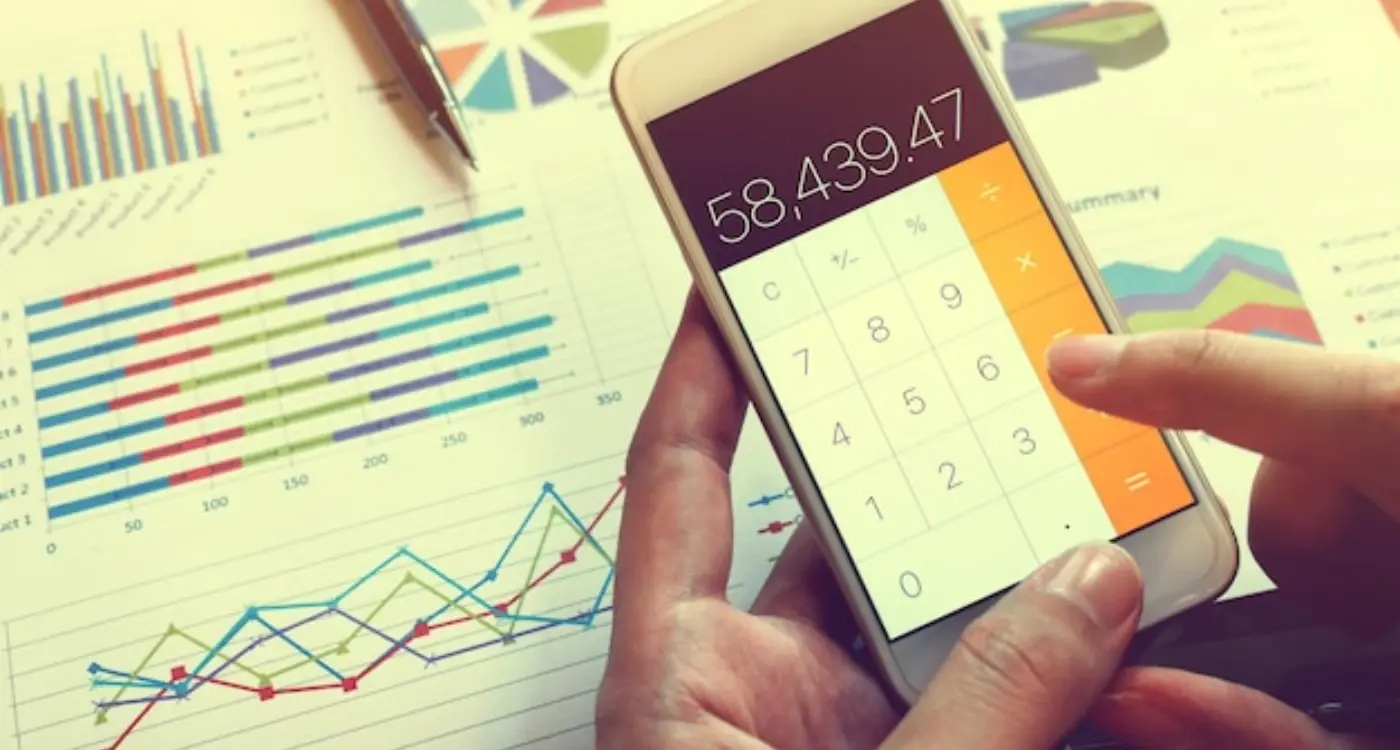How Much Does It Cost To Build An Apple Watch App?
The Apple Watch market has exploded to over 100 million active users worldwide, yet many businesses still haven't tapped into this lucrative opportunity. Building an Apple Watch app isn't just about shrinking your iPhone app down to fit a tiny screen—it's about creating an entirely new user experience that works with quick glances, voice commands, and gestures. The cost implications are quite different too.
What makes Apple Watch app development so unique is the technical constraints you're working with. You've got limited processing power, a battery that needs to last all day, and users who expect lightning-fast interactions. This creates a fascinating challenge that can significantly impact your development budget depending on how you approach it.
The biggest mistake I see companies make is treating Apple Watch development as an afterthought rather than a strategic platform with its own unique requirements and opportunities.
Throughout this guide, we'll break down the real costs involved in Apple Watch development—from simple notification-based apps that might cost a few thousand pounds to complex standalone applications that can run into tens of thousands. We'll explore the technical challenges, design considerations, and ongoing costs that many businesses don't account for in their initial budgets. By the end, you'll have a clear understanding of what it takes to build a successful Apple Watch app and what you should expect to invest.
Understanding Apple Watch App Development Basics
Before we talk money, let's get our heads around what makes Apple Watch apps different from regular iPhone apps. I've worked on dozens of wearable projects over the years, and trust me—building for a tiny screen comes with its own set of challenges that directly impact your development costs.
Apple Watch apps run on watchOS, which is Apple's operating system designed specifically for wearables. Unlike your phone, the watch has limited processing power, a minuscule screen, and battery life that needs careful management. These constraints mean developers can't just shrink down an iPhone app and call it a day.
Two Main Types of Watch Apps
There are two primary approaches to Apple Watch development, and choosing between them affects your budget significantly:
- Companion Apps - These work alongside your existing iPhone app, sharing data and extending functionality to the wrist
- Independent Apps - These run entirely on the watch without needing a paired iPhone app, though they're more complex to build
The watch relies heavily on quick interactions—we're talking glances, taps, and swipes that happen in seconds. Users don't want to spend ages navigating through menus on their wrist. This means your app needs to be incredibly focused on doing one thing really well, which sounds simple but actually requires more thoughtful planning and development time than you might expect.
Key Factors That Affect Development Costs
When clients ask me about Apple Watch development costs, I always tell them the same thing—it depends on what you're trying to build. The complexity of your app is the biggest factor that will determine your budget. A simple notification app that displays basic information will cost far less than a fitness tracker with heart rate monitoring and GPS integration.
The features you choose make a massive difference to the final price. Want to access the watch's sensors like the accelerometer or gyroscope? That'll add time to development. Need offline functionality so your app works without an iPhone nearby? That's more complex coding. Third-party integrations with services like payment processors or social media platforms can also bump up costs significantly.
Start with a basic version of your app and add features later. This approach keeps initial costs manageable and lets you test user response before investing in advanced functionality.
Platform Considerations
Apple Watch apps can't exist independently—they need a companion iPhone app to function properly. This means you're not just building one app; you're building two that need to communicate seamlessly. The data synchronisation between devices adds another layer of complexity that affects both development time and cost.
Your choice of development approach matters too. Native development using Swift typically costs more upfront but delivers better performance and user experience than cross-platform alternatives.
Simple Apps vs Complex Apps—What's the Difference
When I talk to clients about Apple Watch development, there's often confusion about what makes an app "simple" versus "complex"—and why it matters for your budget. The truth is, the difference isn't just about features; it's about how your app interacts with the watch, iPhone, and external services.
Simple Apple Watch Apps
Simple apps typically focus on one primary function and don't require much processing power. Think of a basic timer, a simple note-taking app, or a weather display that shows current conditions. These apps usually cost between £5,000 and £15,000 to develop because they don't need complex backend systems or advanced integrations.
- Single-purpose functionality
- Minimal data processing
- Basic user interface
- No third-party integrations
- Limited complications support
Complex Apple Watch Apps
Complex apps are a different beast entirely. They might include real-time notifications, GPS tracking, health monitoring, or synchronisation with multiple devices. A fitness app that tracks your workout, sends data to your phone, and integrates with HealthKit would fall into this category. These projects typically start at £20,000 and can easily exceed £50,000.
The real cost driver isn't just the number of features—it's how those features work together and communicate with other systems. Complex apps require more testing, more development time, and often ongoing maintenance to keep everything working smoothly.
The Technical Challenges of Smartwatch Development
Building an Apple Watch app isn't like creating a regular iPhone app—there are unique technical hurdles that can seriously impact your development cost. The most obvious challenge is the tiny screen size; you're working with a display that's roughly the size of a postage stamp, which means every pixel counts and every design decision needs to be perfect.
Battery life presents another major headache for developers. The Apple Watch has a much smaller battery than a phone, so your app needs to be incredibly efficient. This means spending extra time optimising code, which translates to higher development costs. Processing power is limited too—the watch simply can't handle the same complex operations as an iPhone.
Storage and Performance Constraints
Storage space on the Apple Watch is precious. Your app needs to be lightweight and smart about what data it stores locally versus what it fetches from the paired iPhone. This creates additional complexity in the development process.
The technical limitations of smartwatch development often require developers to completely rethink their approach, which can add 30-50% to the initial development timeline
Then there's the watchOS itself—it's constantly evolving, and keeping up with new features and compatibility requirements means ongoing development work. These technical challenges aren't insurmountable, but they do require experienced developers who understand the platform's limitations, which naturally affects the overall cost of your Apple Watch app project.
Design Considerations That Impact Your Budget
When I'm working with clients on Apple Watch apps, they often underestimate how much design affects their budget. The Apple Watch screen is tiny—we're talking about designing for a space that's roughly the size of a postage stamp. This constraint means every pixel counts, and getting the design right takes serious skill and time.
The watchOS design guidelines are strict, and Apple expects apps to follow their Human Interface Guidelines to the letter. You can't just shrink down your iPhone app design and call it a day. The watch needs its own unique interface that works with glances, complications, and the Digital Crown. Each of these elements requires separate design work, which adds to your development costs.
Key Design Elements That Affect Pricing
- Custom complications for the watch face
- Unique icons and visual elements sized for the watch
- Navigation flows optimised for small screens
- Accessibility features for different wrist sizes
- Multiple screen size variations (38mm, 40mm, 42mm, 44mm)
Animation and micro-interactions cost extra too. While they make your app feel polished, they require additional design time and careful implementation. Simple, clean designs typically cost less than complex interfaces with lots of custom elements—something worth considering when planning your budget.
Development Team Size and Location Effects
When I'm talking to clients about their Apple Watch app budget, one of the biggest variables is always the development team they choose. The size of your team and where they're based can dramatically shift your costs—sometimes by thousands of pounds.
A solo developer might charge £300-600 per day, whilst a small agency team of 2-3 people could cost £1,500-3,000 daily. Larger agencies with full project teams? You're looking at £3,000-8,000 per day. But here's the thing—bigger teams often work faster, so the total project time shrinks considerably.
Location Makes a Massive Difference
Geography plays a huge role in smartwatch development costs. UK and US developers typically charge premium rates, whilst teams in Eastern Europe, India, or Southeast Asia offer much lower hourly rates. The quality can be excellent regardless of location, but you'll need to factor in communication challenges and time zone differences.
| Location | Daily Rate Range | Quality Level |
|---|---|---|
| UK/US | £400-800 | High |
| Eastern Europe | £200-400 | High |
| India/Southeast Asia | £100-300 | Variable |
Don't just pick the cheapest option—Apple Watch development requires specific expertise. Ask potential developers about their previous smartwatch projects and request examples of their work.
The sweet spot I've found is often a small, experienced team rather than going solo or hiring a massive agency. They balance cost with expertise perfectly for most Apple Watch projects.
Ongoing Costs After Launch
Right, so you've launched your Apple Watch app—congratulations! But here's the thing that catches many people off guard: the costs don't stop when your app goes live. In fact, they've only just begun. I always tell my clients to budget for ongoing expenses because, well, apps aren't fire-and-forget missiles; they need constant care and feeding.
The biggest ongoing expense you'll face is maintenance and updates. Apple regularly releases new watchOS versions, and your app needs to stay compatible. This means your development team will need to test and update your app several times a year. Then there's bug fixes—no matter how well you test before launch, users will find issues you never thought of.
Monthly Costs to Consider
- Server hosting and backend services (£20-500+ per month)
- Apple Developer Programme membership (£79 annually)
- Third-party services and APIs (£10-200+ per month)
- Analytics and monitoring tools (£0-100+ per month)
- Development team retainer for updates (£500-2000+ per month)
Don't forget about feature updates either. Users expect apps to improve over time, not stay static. This means adding new functionality, improving performance, and keeping up with design trends. Most of my clients spend around 15-25% of their initial development budget annually on ongoing costs—it's just part of the game.
Conclusion
Building an Apple Watch app isn't cheap—let's be honest about that. You're looking at anywhere from £5,000 for a basic companion app to £50,000 or more for something complex with standalone features. The cost depends on what you want to build, who's building it, and how much time you're willing to invest in getting it right.
What I've learned over the years is that smartwatch development is quite different from regular mobile app development. The technical challenges are real—you're working with limited screen space, processing power, and battery life. Your development team needs to understand these constraints from day one; otherwise you'll end up spending more money fixing problems later.
The ongoing costs after launch matter too. App Store fees, updates, bug fixes, and new feature development all add up. I always tell clients to budget for at least 20% of their initial development cost each year for maintenance.
My advice? Start simple. Build a basic version first, test it with real users, then add more features based on what people actually want. This approach saves money and gives you a better chance of success in the competitive Apple Watch market.
Share this
Subscribe To Our Learning Centre
You May Also Like
These Related Guides

How Do I Calculate My App Development Budget Properly?

How Do You Budget for a News and Magazine Mobile App?



